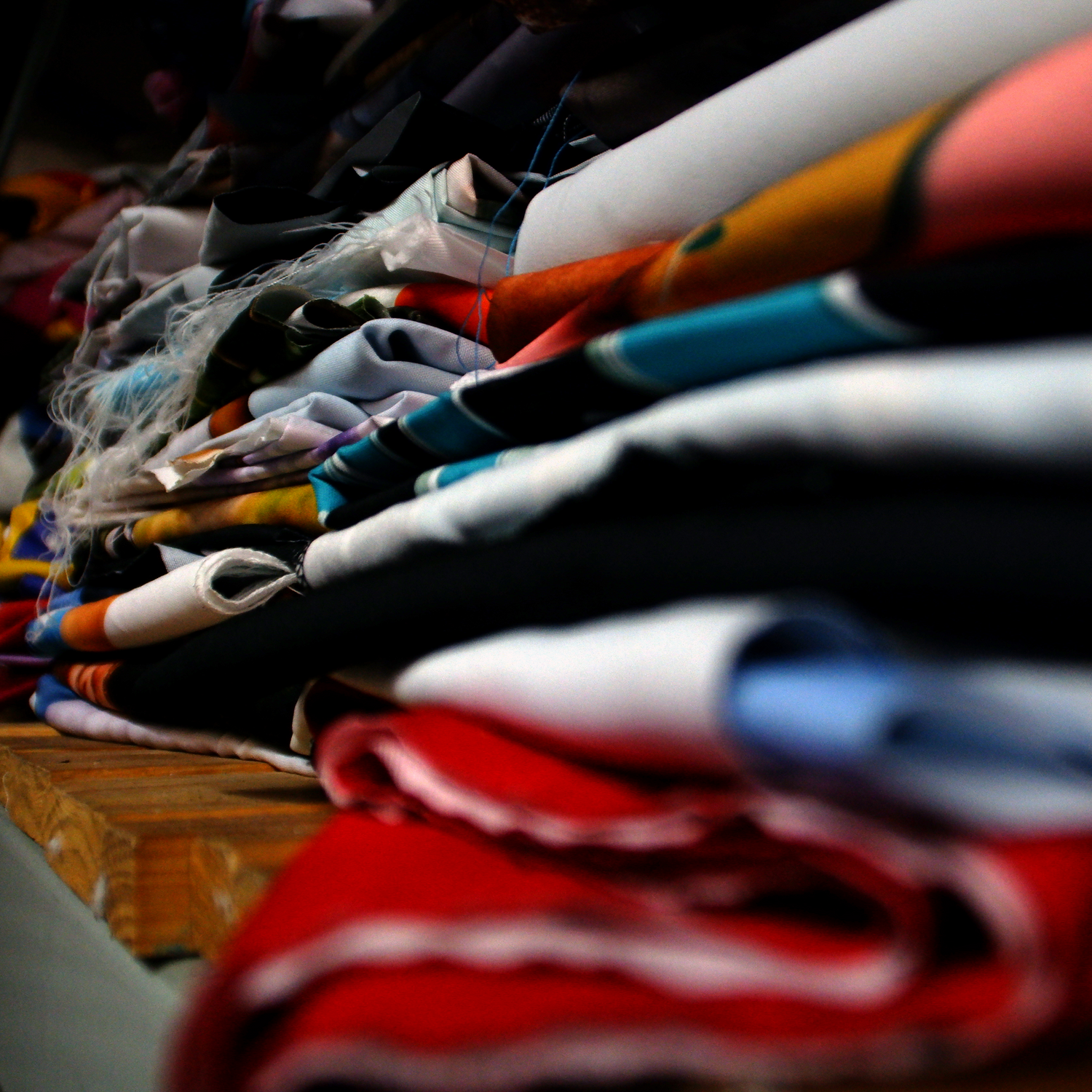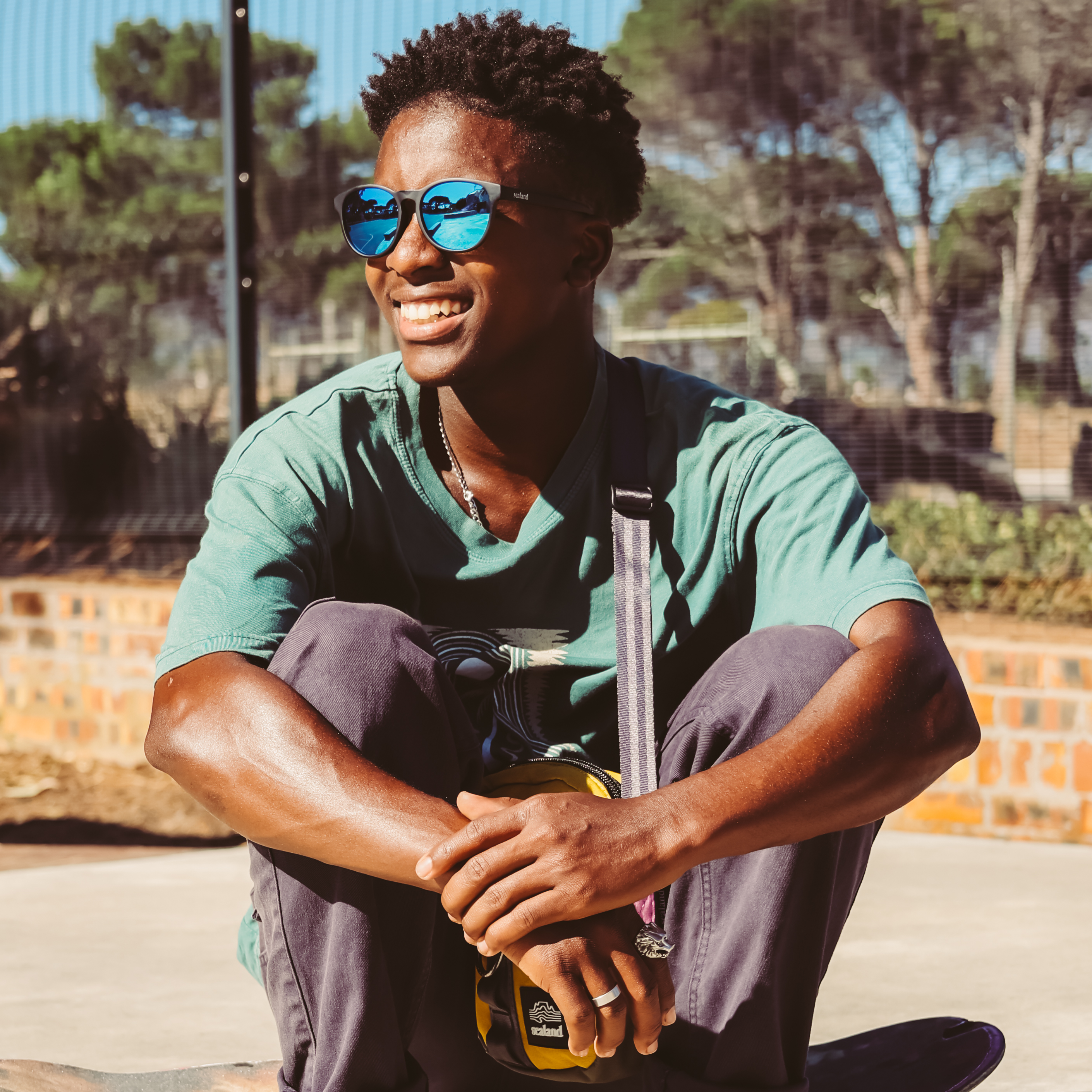by: Sealand
4 min read

The 'Poly' Story
Sealand started on a very simple premise. Durable, often beautiful material was being sent to landfill not because it was actually waste, but simply because it was no longer fit for it’s intended purpose. By repurposing this material, Sealand gives value to this useful, but often polluting resource, diverting it away from landfill and creating not only jobs - but high quality products in the process. Our first ingredients included yacht sail and polyester twill fabric, which has remained a backbone of our production ever since. We have managed to divert 83.229 tons textile waste diverted since 2015, and 11.762 tons in 2023 alone! If we use UPC INTERTEXTER estimates this equates to 2 080.725 tons of CO2 emissions avoided.
What is Polyester Twill?
Polyester fabric has a fascinating history that dates back to the mid-20th century. Originally developed as a synthetic alternative to natural fibers like cotton and wool, polyester quickly gained popularity due to its unique properties and versatility. It is created by extruding PET (the most widely recycled polymer in the world) into fibers and then spinning and drawing these to create a strong, long lasting and lightweight fabric. The polyester fibers are woven or knit into various types of fabrics, including twill. Twill fabric is characterized by its diagonal weave pattern, which is achieved by interlacing the fibers in a repeating pattern that creates a series of parallel diagonal lines. In recent years, advancements in textile technology have led to the development of eco-friendly polyester fabrics made from recycled PET bottles or other post-consumer waste materials. This sustainable approach to polyester production helps to reduce the environmental impact of textile manufacturing while still delivering the durability and performance that polyester is known for.

Why are we using it?
Although polyester fabrics are used for many varied applications, Sealand utilises Poly Twill once used as in-store advertising banners for our upcycled lining. Polyester twill fabric boasts several qualities that make it an ideal choice for advertising purposes. Its durability ensures that advertising displays withstand the test of time, maintaining their visual appeal even after prolonged use. Secondly, its lightweight nature makes it easy to handle and transport, allowing for hassle-free installation and repositioning as needed. But what truly sets polyester twill fabric apart is its exceptional print quality. Whether it’s showcasing vibrant graphics, intricate designs, or bold branding, polyester twill fabric ensures crisp and vivid reproduction. This means that Poly Twill is an incredibly popular choice for retailers looking to advertise their sales, specials and deals in indoor environments, making up the bulk of their in-store advertising displays. But when seasons, sales or prices change, any old advertising material becomes immediately redundant - and considered waste by some. This is one of the waste streams Sealand utilises as a major input due to the consistent, ubiquitous nature of the supply and the quality of this “waste” - large, beautiful sheets ready for production!
How do we access this?
Sealand is in the privileged position of holding brilliant, productive relationships with not only the major retailers using Poly Twill for advertising, but their suppliers of this material. Our retail partners include Pick n Pay, Mr Price, Pepkor, Ackermans, TFG and other partners looking to handle their ex-advertising material responsibly such as the Mining Indaba. The collection and coordination of the Poly Twill would be impossible, however, without the unwavering support of their suppliers, Digital Express Printing and Hirt & Carter, who print, collect and deliver this material to and from retailers and Sealand. This ensures that we always know when the next batch is coming, and we hold these relationships carefully and conscientiously to ensure that we can continue to upcycle and make a difference in our city. During 2023 these partners provided Sealand with 11.762 tons of textile waste, diverting one of their waste streams and providing us with high-quality, vibrant material to upcycle.

What do we use it for?
Once the Poly Twill is delivered, the chonking is removed (and recycled!) and the material becomes part of our fabric stock. We then cut the Poly Twill to size and sew it to form a fully upcycled lining in each and every bag we create. Because this fabric still bears the advertising print, often vivid and attractive, these linings become unique and beautiful additions within our bags and ensure that every piece of gear contains a striking reminder of the fact that this is not virgin canvas, not created especially for this purpose but is rather reimagined, repurposed and recreated into a new use cycle - the very essence of circularity!
What impact does this have?
Reusing Poly Twill has a two-pronged positive impact. By preventing this material from reaching landfill, end-of-life emissions and microplastics are diverted. And by reusing, instead of purchasing new fabric, the demand for production of new fabric is reduced.
The fabric industry has a massive global impact in GHG emissions and microplastic creation. Its negative environmental impact arises from significant energy consumption, water usage, and chemical utilization, as well as the accumulation of textile waste and microfiber release into the environment during washing (Niinimäki et al., 2020). The apparel and footwear sectors, due to extended supply chains and energy-intensive manufacturing processes, contribute 8–10% (around 2 billion tons CO2) of worldwide carbon emissions, surpassing those from both aviation and shipping combined (European Parliament, 2021). Additionally, it has been approximated that textile dyeing and finishing are responsible for up to 20% of industrial wastewater pollution. The UPC’s INTERTEXTER group estimated that by reusing 1kg of textile, up to 25kg CO2 emissions may be avoided. This means that by reusing 83.229 tons of textile waste since 2015, Sealand has contributed to saving 2 080.725 tons of CO2 emissions.

By keeping this material out of landfill, the release of GHGs, pollutants and microplastics in the end-of-life phase is reduced. Globally, 92 million tons of textile waste ends up in landfill each year, releasing an estimated 200 000 - 500 000 tons of ecosystem-disrupting microplastics into the marine environment. This landfill amount is expected to increase to 134 million tons by 2030 as fast-fashion and cheap materials push supply and demand up in unison, with little to no regard to the consequences of this increase on the environment. Polyester can take 200+ years to break down in a landfill - and it breaks down into pollutants. By reducing the amount of polyester waste in landfill, Sealand reduces contamination and disruption of our local ecosystems.
Does it work?
Our Poly Twill linings are adored by customers and form a cornerstone of our efforts to manufacture responsibly, reducing our impact on the world around us and creating value from waste. We are very proud of the impact we’ve made and the attention we have brought to this waste stream, bringing it to the fore in every conversation we have with retailers, printers and partners and being the first South African enterprise to successfully incorporate this waste into striking, durable products. Upcycled linings sit both literally and figuratively at the core of every bag, and of Sealand’s business and impact model.


